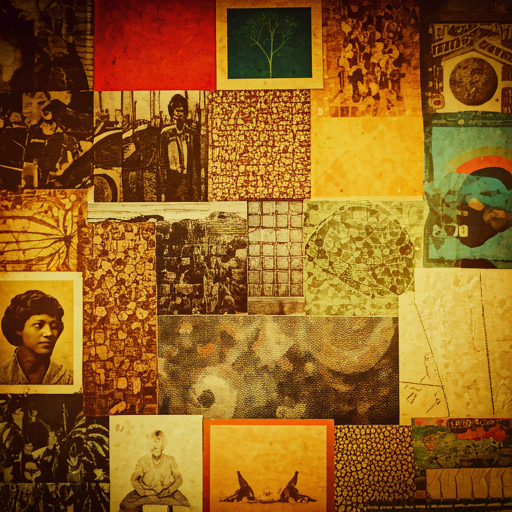There are no items in your cart
Add More
Add More
| Item Details | Price | ||
|---|---|---|---|
Reconnect with yourself through 5 simple art activities that inspire mindfulness, calm, and self-expression.
26 November 2024, Contributed by Bhargavi Raman & Tripti Kathait
Art is the quiet conversation between your soul and the world, reminding you who you are in the midst of everything you feel - unknown
We all have those days when we’re just... lost. The world spins a bit too fast, and in the rush of things, we drift away from our own center. Getting back to yourself doesn’t need a grand realization; sometimes, it’s just about tapping into creativity in ways you haven’t before. Connecting with yourself also connects you to the world around you—an echo of who you are within the environment you create, nurture, and move through. So here’s a list of five ways to use art to reconnect with yourself, grounded in the beauty of your surroundings.
Origami isn’t just about making cute paper cranes (though that’s fun too!). It’s the art of taking something flat and lifeless, like paper, and transforming it into a 3D form. As you fold, crease, and shape the paper, you get a moment to be present, focusing only on the next step. Origami requires concentration but also brings in a certain flow, almost meditative. Every fold can represent letting go of thoughts and worries. The repetitive motions calm the mind, helping you to reconnect with the present moment. Plus, there’s a sense of accomplishment when you’ve turned a simple sheet of paper into something beautiful!

2. Clay Work: Mold Your Emotions
Working with clay is all about using your hands, pushing, pulling, and molding it to express what words can’t always capture. It’s a tactile experience, and as you work with the clay, it’s almost like you’re giving shape to your feelings. There’s something magical about using your hands to create something. When hands touch clay, exteroceptors and interoceptors become naturally stimulated, and every movement of the hands provides instant feedback to the brain, allowing non-verbal access to psychological and sensorimotor processes. The act of shaping clay is grounding and allows you to release pent-up emotions through touch and pressure. Plus, when you let go of perfection and focus on the process, you get the chance to understand and accept your own imperfections.

3. Photography: See the World, See Yourself
Photography invites you to pay attention to the world around you. It’s all about finding appreciation in the small details, noticing things that usually go unseen, and capturing moments that speak to you. As you snap a photo, you’re not just taking a picture; you’re expressing what resonates with you in that moment. It teaches mindfulness. When you look for what you want to capture, you’re forced to slow down and observe, noticing details and beauty you’d normally miss. This new way of seeing can act like a mirror, helping you reflect on what you find beautiful, meaningful, or interesting, which says a lot about who you are.

4. Collaging: Piece Together Your Story
Have a bunch of old magazines lying around? Perfect! Grab some scissors, glue, and get to collaging. This isn’t just about cutting and pasting random pictures; it’s about bringing together pieces that mean something to you, creating a visual story of who you are or how you’re feeling. Collaging lets you layer and piece together things that resonate with you, creating a tangible representation of your inner world. It’s powerful because you’re crafting something unique that reflects your journey, aspirations, and experiences. As you tear, cut, and paste, you’re uncovering pieces of yourself, putting your thoughts and feelings into a single, connected picture.

5. Gardening: Growing Calm and Connection
Gardening is more than just taking care of plants; it’s a way to slow down, relax, and reconnect with yourself. Start with a plant that suits you—a succulent if you want something easy, a flowering plant if you love a bit of color, or even herbs for the kitchen. Think of how you want your green space to feel, like a small haven you’ve built with care.
When you plant, water, and care for each leaf, you’re not just helping something grow—you’re learning patience, focus, and self-connection. Each time you check in on your plants, you’re tuning into their needs, almost like a quiet conversation. Seeing them thrive reminds you that, just like them, you can grow with time, patience, and care. Gardening brings a sense of calm, helping you slow down and find peace in the small, steady rhythms of life.

References
1- The Art of Origami
2- Clay Art Therapy for Physical, Psychological and Cognitive Improvement
3- How to Use Photography as Self-Therapy
4- Collage as a mode in the treatment of trauma

Bhargavi Raman
Expressive Arts Therapist and Mental Health Educator.

Tripti Kathait